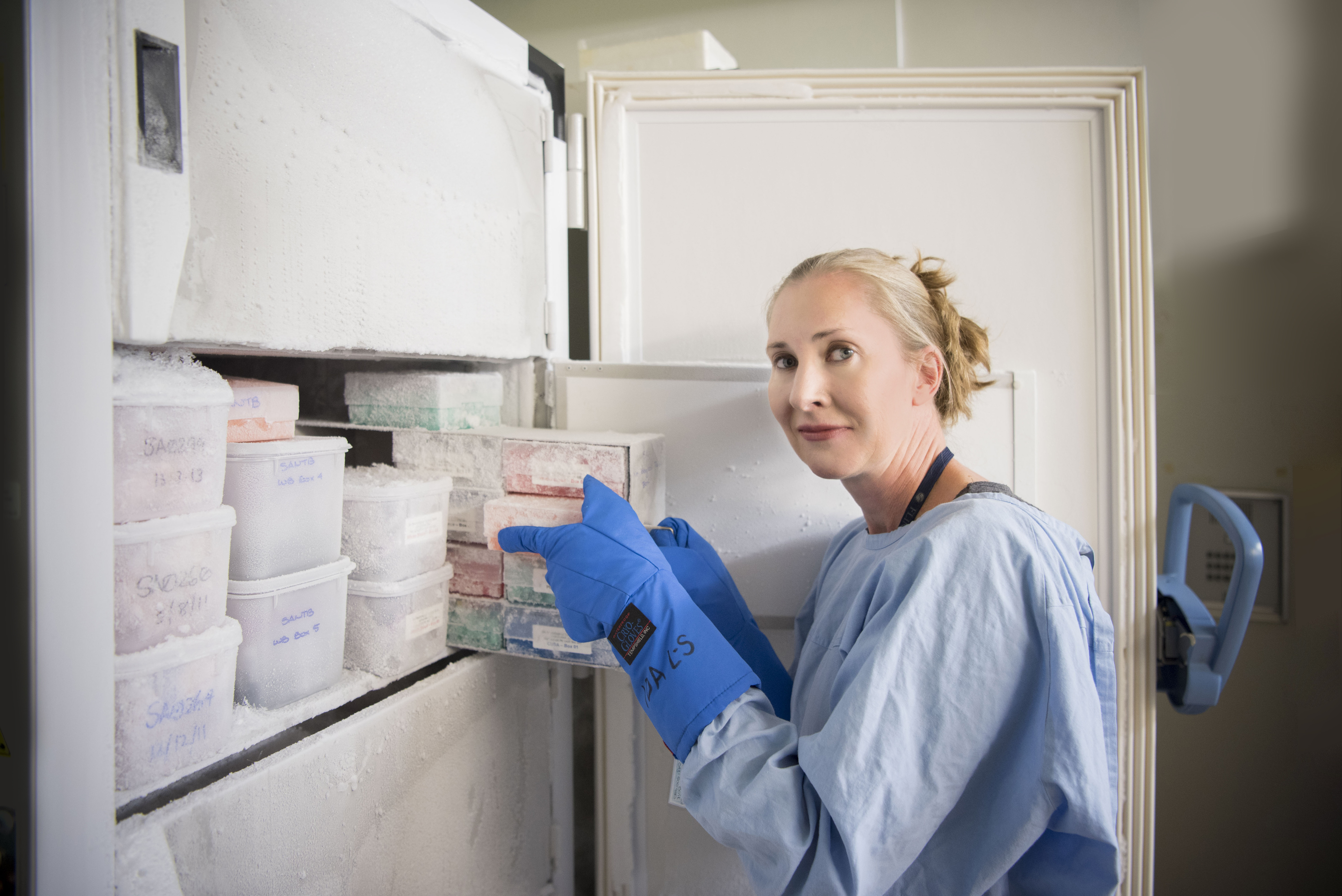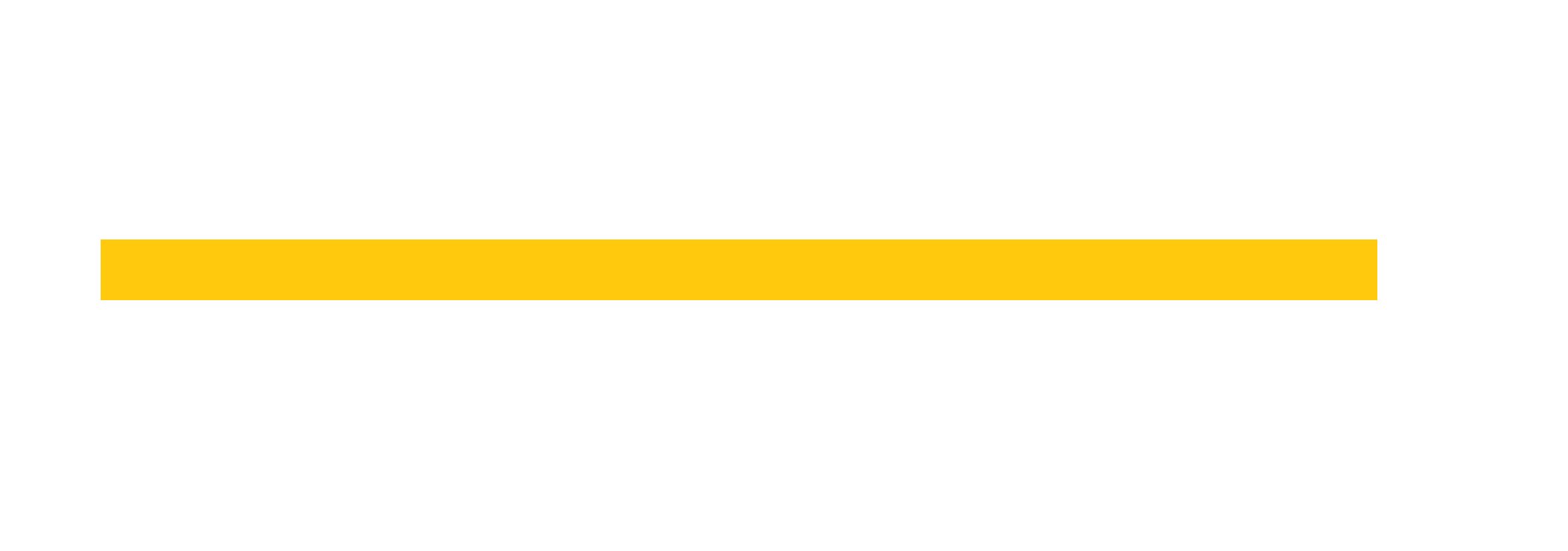Learn about the SA Neurological Tumour Bank
As part of Grey May we did a walk through the SA Neurological Brain Tumour Bank (SANTB) and interviewed SANTB Director Dr Santosh Poonnoose and Coordinator Dr Rebecca Ormsby.

The SA Neurological Tumour Bank (SANTB) is the first of its kind in South Australia, and ensures that the precious brain and tumour tissue donated by patients is utilised most efficiently to support ground-breaking research into brain and spinal cord tumours.
The tumour bank began collecting samples in 2015, at a time when very little brain tumour research was being conducted in SA. The SANTB now supports 8 research groups conducting world-leading research, which has facilitated millions in grant funding being directed to support this vital research.
The creation of this invaluable resource was only possible thanks to funds raised by the general public, contributed from the NeuroSurgical Research Foundation, Ride Like Crazy and the Flinders Foundation.
The NeuroSurgical Research Foundation continues to support the SANTB including the recent purchase of lab equipment which reduces the time taken to prepare samples for research and removes the need to transfer samples between laboratories.
We interviewed SANTB Director Dr Santosh Poonnoose and Coordinator Dr Rebecca Ormsby to learn more the impact the tumour bank has had on brain tumour research in SA.

What is the SA Neurological Tumour Bank?
The SANTB was set up by a passionate group of neurosurgeons, clinicians and researchers to facilitate brain and spinal cord research in SA. The role of the tumour bank is to collect neurological specimens from consenting patients undergoing surgery to remove their tumour as part of diagnosis or treatment, and provide these specimens to researchers to support their projects.
Who founded the tumour bank?
The SANTB was founded by Santosh Poonnoose (SA Neurosurgeon and NRF Board Member) and Robyn Flook (SA Brain Bank Coordinator) in 2011. However it didn’t become fully operational until 2015. Robyn sadly passed away in 2017 but I know she would be extremely happy and proud to see how much the SANTB has grown and achieved over the last five years.
Who oversees the tumour bank?
The Management Committee consists of:
- Dr Ganessan Kichenadasse (Co-Director, Medical Oncologist, FMC)
- Dr Santosh Poonnoose (Co-Director, Neurosurgeon, FMC)
- Dr Rebecca Ormsby (SANTB Coordinator)
- Christine Fairley-Bishop (Neurosurgery Clinical Nurse Consultant, FMC)
- Dr Adam Wells (Neurosurgeon, RAH)
- Dr Xenia Doorenbosch (Neurosurgeon, RAH)
- Lola Kaukas (Neurosurgery Research Assistant, RAH)
Who else contributes to the success of the tumour bank?
The biggest thank you has to go to the all donors who have contributed to the SANTB over the last 7 years. This sort of research couldn’t happen without patient tumour tissue and blood samples and we are really grateful that they take the time to read the SANTB information booklet and consent to donate their tissue at what is a really stressful point in their lives.
The SANTB is also supported by an amazing team of people whose help is essential to our ongoing activities. Some of these people include:
- FMC and RAH neurosurgery doctors (registrars, RMOs, interns)
- FMC and RAH theatre staff
- SA Pathology blood nurses and specimen reception staff
We are also really grateful to the NRF for their ongoing support - NRF funding has enabled the SANTB to build a better quality biobank which increases the research value of the specimens we provide and subsequently the quality of the research from the groups that we support.
What research groups does the tumour bank currently support?
The tumour bank currently supports 6 Adelaide research groups:
- Dr Lisa Ebert/Prof Michael Brown (Uni SA)
- Prof Stuart Pitson/Dr Melinda Tea (Uni SA)
- A/Prof Simon Conn/ Dr Brett Stringer (Flinders University)
- Dr Cedric Bardy (SAHMRI/Flinders University)
- Dr Guillermo Gomez (Uni SA)
- Prof Benjamin Thierry/ Dr Nicole Dmochowska (Uni SA)
One interstate research group:
- Prof Terrence Johns/Dr Emily Fletcher (Kids Telethon Institute, WA)
Plus we are about to commence our first pituitary tumour research project with
- Dr Nick Candy (SALHN)
Rebecca what attracted you to the position of SANTB Coordinator?
Prior to my current role as Coordinator of the SANTB, I was a Research Fellow at Flinders Centre for Innovation in Cancer focused on prostate cancer and radiation biology. As is often the way in research, despite having publications and some exciting data our grant wasn’t renewed and after 7 years in this field I was out of work.
I was 3 months away from having my second child so I took this opportunity to have a year out of research to look after and spend time with my two beautiful young kids. As much as I loved this time, when the position for SANTB Coordinator was advertised I saw a fantastic opportunity to help establish a valuable resource in an area of cancer that has been overlooked and underfunded for so long. I started in the position on my son’s first birthday so I felt pretty guilty putting him in childcare that day but I think he’s forgiven me 7 years later! At the time there were a lot of people who questioned why we were setting up a neurological tumour bank when there were no neurological tumour research groups in Adelaide, but we knew that for this type of research to occur that patient samples are key and that the biobank would help to attract research in this area in South Australia. So we ignored these comments and continued with our long-term plans.
What was the process like setting up the tumour bank?
Getting the SANTB operational at FMC and the RAH has been a challenging but extremely rewarding process. From organising the ethical approvals, operational protocols, applying for grants to expand our activities, collaborating with researchers and a wide range of hospital and university staff to make this coordinated effort run (relatively) smoothly to the logistics of collecting specimens that arrive all hours and days all while working part-time and raising two young kids has been hard work but worth it. For every specimen that I collect I know that there is a patient and family members who are desperate for better treatment and better outcomes than what they currently have.
Prior to the establishment of the SANTB there was very little brain tumour research occurring - the fact that we now have 6 very active groups doing world class research in Adelaide, one new project coming on board, plus one interstate group is testament to the value of this resource.
Rebecca tells us a bit more about herself, what does a normal day look like for you?
When I’m not madly rushing around juggling specimens, paperwork, data and kids, I like to keep sane by getting on my bike and heading out to the hills either on my mountain bike or gravel bike. Adelaide is an amazing place to live in terms of the ability to get out into green space, whether it’s walking, riding etc and it’s such a great way to clear your head from the daily work stresses, keep physically fit and mentally healthy. COVID has been such a game changer for work-life balance for me. A typical day for me now is to get up around 6:00 am and work at home instead of trying to fit a long ride in on the way to work (often in the cold and dark), I can now see my kids in the morning for breakfast, ride the 1 km with them to school, then return home to work a bit longer before heading out on a short ride in the middle of the day. Riding in the middle of the day when it’s warm and sunny and breaking up long days on the computer does wonders for my mental health and focus. In the afternoon I might head into FMC or the RAH and work on the specimen and clinical work. My work day can be much longer overall but it’s so much more flexible and works in with family life significantly better - my kids are much happier which makes a better homelife all round.




